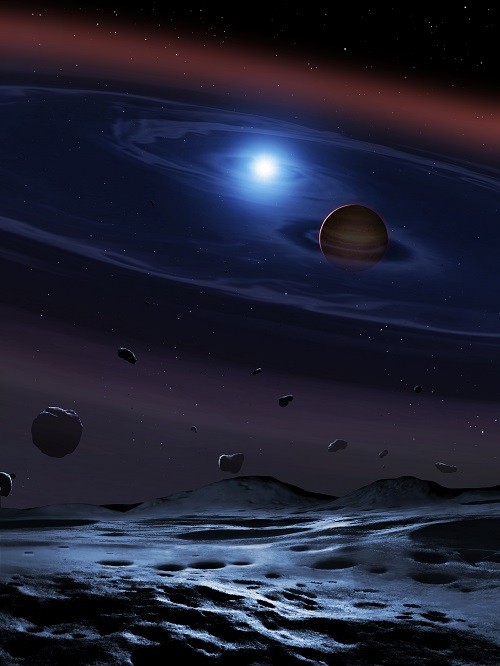By Ana Verayo, | March 01, 2017

A disc of rocky debris from a disrupted planetesimal surrounds white dwarf plus brown dwarf binary star.
Science fiction just became too real when astronomers discovered a real life Star Wars planetary system similar to Tatooine. This system possesses two stars, a white dwarf star and a brown dwarf star that is enshrouded with rocks, dust, and gas.
A team from the University College London detected this new planetary system known as SDSS 1557. Astronomers were able to use the Gemini Observatory South telescope and the European Southern Observatory's Very Large Telescope in Chile to observe this system.
Like Us on Facebook
Scientists reveal how these stars can orbit each other completely every two hours. The SDSS 1557 system is also around 1,000 light years away from Earth.
There are thousands of exoplanets in the Milky Way galaxy and beyond, however, the unique thing about this double star system is that it hosts rocky worlds similar to Earth. Most systems that possess two stars are host to gas giants like Jupiter but this one hosts Earth-like rocky planets.
According to the lead author of the study, Jay Farihi of the Physics and Astronomy department at University College London, it takes extraordinary conditions to create rocky planets around two suns since the powerful gravitational forces of both stars can push and pull planetary debris. This can prevent rocks, dust, and gasses from forming into full planets.
Farihi explains, however, despite two stars in SDSS 1557, this newly detected rocky exoplanet in this system is made from asteroid debris. There are clear signatures of rocky planet assembly courtesy of large asteroids that begin to form that can help in the further understanding of how rocky exoplanets are created within binary star systems.
The stars of this Tatooine-like system are also faint and smaller than our sun. The brown dwarf star is 60 times bigger than Jupiter and the white dwarf star is similar to the sun but also has a burnt out core. The system's planetary disk is composed of space dust that is filled with rocks, which suggests a terrestrial planet that can be similar to the dune filled, desert world Tatooine in the Star Wars film series.
Apart from this, there is also high metal content in the system, with silicon and magnesium detected within SDSS 1557. This was detected when space debris was flung into one of the orbiting stars.
According to a co-author of the study, Steven Parsons of the University of Sheffield, there are thousands of binary systems similar to SDSS 1557 but this marks the first time that we have seen asteroid debris and pollution. Initial data revealed a brown dwarf star very much hidden in dust. This new study is published in the journal Nature Astronomy.
-
Use of Coronavirus Pandemic Drones Raises Privacy Concerns: Drones Spread Fear, Local Officials Say

-
Coronavirus Hampers The Delivery Of Lockheed Martin F-35 Stealth Fighters For 2020

-
Instagram Speeds Up Plans to Add Account Memorialization Feature Due to COVID-19 Deaths

-
NASA: Perseverance Plans to Bring 'Mars Rock' to Earth in 2031

-
600 Dead And 3,000 In The Hospital as Iranians Believed Drinking High-Concentrations of Alcohol Can Cure The Coronavirus

-
600 Dead And 3,000 In The Hospital as Iranians Believed Drinking High-Concentrations of Alcohol Can Cure The Coronavirus

-
COVID-19: Doctors, Nurses Use Virtual Reality to Learn New Skills in Treating Coronavirus Patients







